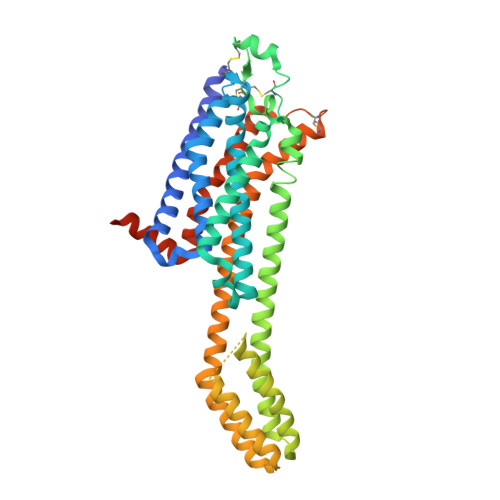X-Ray Crystallography and Free Energy Calculations Reveal the Binding Mechanism of A 2A Adenosine Receptor Antagonists.
Jespers, W., Verdon, G., Azuaje, J., Majellaro, M., Keranen, H., Garcia-Mera, X., Congreve, M., Deflorian, F., de Graaf, C., Zhukov, A., Dore, A.S., Mason, J.S., Aqvist, J., Cooke, R.M., Sotelo, E., Gutierrez-de-Teran, H.(2020) Angew Chem Int Ed Engl 59: 16536-16543
- PubMed: 32542862
- DOI: https://doi.org/10.1002/anie.202003788
- Primary Citation of Related Structures:
6ZDR, 6ZDV - PubMed Abstract:
We present a robust protocol based on iterations of free energy perturbation (FEP) calculations, chemical synthesis, biophysical mapping and X-ray crystallography to reveal the binding mode of an antagonist series to the A 2A adenosine receptor (AR). Eight A 2A AR binding site mutations from biophysical mapping experiments were initially analyzed with sidechain FEP simulations, performed on alternate binding modes. The results distinctively supported one binding mode, which was subsequently used to design new chromone derivatives. Their affinities for the A 2A AR were experimentally determined and investigated through a cycle of ligand-FEP calculations, validating the binding orientation of the different chemical substituents proposed. Subsequent X-ray crystallography of the A 2A AR with a low and a high affinity chromone derivative confirmed the predicted binding orientation. The new molecules and structures here reported were driven by free energy calculations, and provide new insights on antagonist binding to the A 2A AR, an emerging target in immuno-oncology.
- Department of Cell and Molecular Biology, Uppsala University, BMC, Biomedical Center, Box 596, Uppsala, Sweden.
Organizational Affiliation:






















